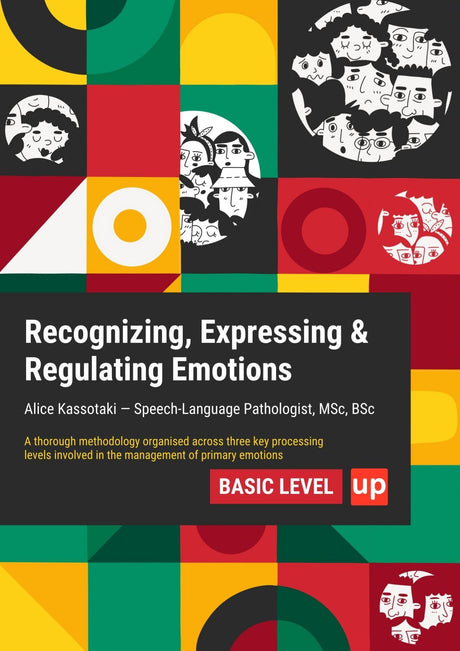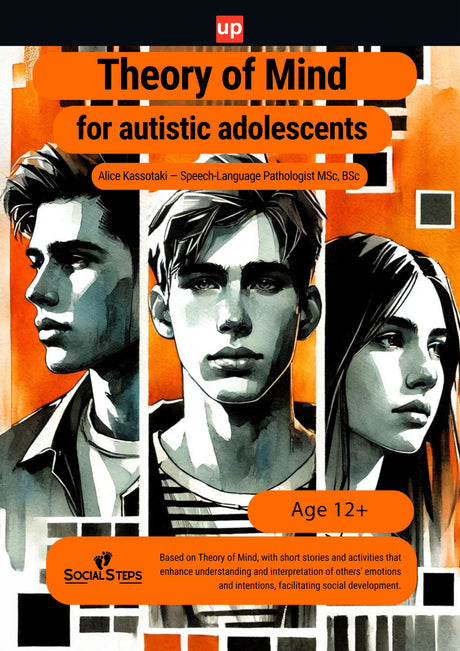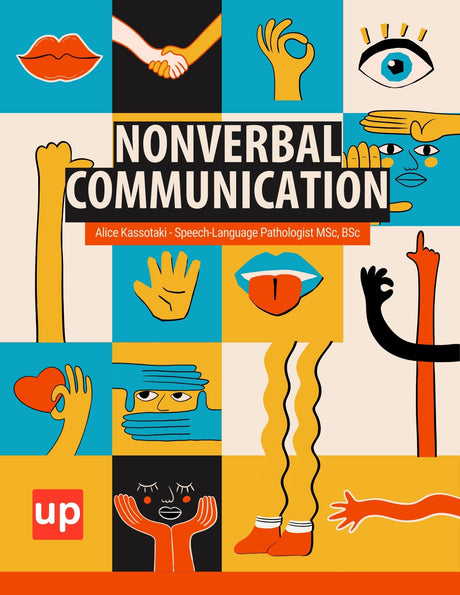Introduction: Navigating the Intersection of Two Complex Conditions
Navigating the intersection of mental health conditions can feel like charting unknown territory. When the maps for Autism Spectrum Disorder (ASD) and Borderline Personality Disorder (BPD) overlap, the landscape can seem particularly complex and confusing for individuals, their families, and even clinicians. For years, these two conditions were often seen as distinct, but a growing body of evidence confirms they can and do co-occur. This article serves as a guide to understanding this complex intersection, moving beyond the confusion to a place of clarity, effective management, and empowerment. It affirms a crucial message from the outset: while the challenges are real, living a fulfilling life is not just possible, but achievable. Yes, you can.
Key Points
- Autism Spectrum Disorder (ASD) and Borderline Personality Disorder (BPD) can co-occur, creating a complex clinical picture that requires careful, nuanced assessment and tailored treatment.
- While ASD is a neurodevelopmental condition and BPD a personality disorder, overlapping traits such as emotional dysregulation and social challenges often lead to diagnostic confusion, particularly in women.
- Effective management demands an integrated, person-centered approach combining adapted therapeutic models (like DBT), trauma-informed care, and ongoing support focused on self-awareness and strengths.
Decoding the Foundations: Autism Spectrum Disorder and Borderline Personality Disorder

While some behaviors can overlap, ASD and BPD have distinct foundations. This chart highlights the core differences in their origin, type, and primary characteristics.
To understand the overlap, we must first appreciate the distinct nature of each condition. Autism Spectrum Disorder is a neurodevelopmental condition, while Borderline Personality Disorder is a personality disorder. Though they manifest in ways that can appear similar, their origins and core characteristics are fundamentally different. Recognizing these foundations is the first step toward accurate diagnosis and effective, integrated treatment.
Autism Spectrum Disorder: A Neurodevelopmental Landscape
Autism Spectrum Disorder (ASD) is characterized by persistent differences in social communication and interaction, alongside restricted, repetitive patterns of behavior, interests, or activities. As defined by the Diagnostic and Statistical Manual of Mental Disorders (DSM-5), these traits are present from early development. Individuals with ASD may find it challenging to interpret non-verbal social cues, engage in reciprocal conversation, or develop relationships in a typical manner. They often have deep, focused special interests and may find comfort in routines and predictability.
Borderline Personality Disorder: Navigating Emotional Instability and Relationships
Borderline Personality Disorder (BPD) is one of several personality disorders characterized by a pervasive pattern of instability in interpersonal relationships, self-image, and emotions, coupled with marked impulsivity. Core features include an intense fear of abandonment, chronic feelings of emptiness, inappropriate anger, and significant emotional dysregulation. An individual’s sense of self can be unstable, leading to rapid shifts in goals, values, and identity.
The Critical Shift: From Differentiation to Co-Existence
The clinical history surrounding these two mental disorders has been complex. For a long time, the presence of one was often seen as an exclusionary criterion for the other. However, as our understanding has deepened, the focus has shifted. Clinicians now recognize that the neurodevelopmental framework of ASD does not preclude the development of a personality disorder. This critical shift acknowledges that an individual can have underlying autistic traits and also develop BPD, often in response to environmental factors like trauma.
The Unique Landscape of Co-Occurrence: Overlapping Symptoms and Distinct Origins

When ASD and BPD co-exist, they create a unique and often challenging clinical picture. The symptoms of one disorder can mask or amplify the symptoms of the other, leading to diagnostic confusion. Untangling this overlap requires looking beyond the observable behavior to understand the underlying "why"—the distinct origins of each trait. This nuanced perspective is essential for creating a support plan that addresses the whole person.
When Traits Collide: Exploring Key Symptom Overlaps
Several key symptoms present in both conditions, most notably difficulties with social interactions and profound emotional dysregulation. An autistic individual’s difficulty with social cues might be misinterpreted as the relational instability of BPD. Similarly, an autistic meltdown resulting from sensory overload can look identical to the intense emotional outbursts characteristic of BPD. Both may also experience sensitivity to perceived rejection, but the root causes differ significantly.
The Compounding Effect: How ASD Traits Can Exacerbate BPD Symptoms
The presence of underlying autistic traits can intensify the challenges of BPD. For example, an autistic person’s inherent difficulty in interpreting social cues can fuel the BPD-related fear of abandonment, creating a painful feedback loop. A need for routine (ASD) might clash with impulsive behaviors (BPD), causing internal distress. This compounding effect means that standard treatment for BPD may be less effective without accommodations for the individual's autistic neurotype.
The Role of Trauma- and Stressor-Related Disorders
Research suggests a strong link between trauma and the development of BPD. Autistic individuals are unfortunately more vulnerable to experiencing trauma, including social rejection, bullying, and misunderstanding. When an autistic person experiences chronic stress or trauma, it can contribute to the development of BPD symptoms. This makes conditions like post-traumatic stress disorder (PTSD) important considerations in the diagnostic process.
The Diagnostic Conundrum: Identifying Co-Occurring Autism and BPD
Accurately diagnosing co-occurring ASD and BPD is one of the most significant challenges in clinical practice. The symptomatic overlap can easily lead to one condition being missed or misidentified, which has profound implications for an individual's treatment and overall functioning. A careful, comprehensive assessment is not just beneficial; it is absolutely necessary for effective support.
The Challenge of Differential Diagnosis: Why it's So Difficult
Differential diagnosis involves distinguishing between two or more conditions that share similar signs or symptoms. The overlap in social difficulties, emotional intensity, and even identity confusion between ASD and BPD makes this process incredibly difficult. Clinicians must carefully parse whether emotional outbursts stem from sensory overload (ASD) or fear of abandonment (BPD). Distinguishing these from other mental disorders, such as bipolar disorders, further complicates the picture.
The Risk of Misdiagnosis: Particularly in Females
Females with autism are at a particularly high risk of misdiagnosis. Autistic females often develop sophisticated masking or camouflaging techniques to navigate social situations, which can hide the core traits of ASD. Their internal distress and emotional struggles may be more visible, leading clinicians to diagnose BPD while missing the underlying neurodevelopmental condition that provides crucial context for their experiences.
Towards Accurate Diagnosis: A Comprehensive Approach
An accurate diagnosis requires a comprehensive evaluation that goes beyond a simple checklist of criteria. It must include a detailed developmental history, looking for signs of ASD from early childhood. It should also involve gathering information from multiple sources, such as family members, and using assessment tools specifically designed for both ASD and personality disorders. The goal is to build a complete picture of the individual's lifelong functioning.
Integrated Treatment Strategies: Tailoring Support for Dual Diagnoses

Effective support for co-occurring ASD and BPD cannot be a one-size-fits-all approach. The most successful treatment plans are integrated, borrowing and adapting strategies from therapeutic models for both conditions. This requires a flexible, person-centered approach that acknowledges the unique interplay between the neurodevelopmental and personality-based challenges.
Adapting Evidence-Based Therapies for Co-Occurrence
Dialectical Behavior Therapy (DBT), the gold-standard therapy for BPD, can be highly effective for individuals with a dual diagnosis when adapted. The skills it teaches—mindfulness, distress tolerance, emotion regulation, and interpersonal effectiveness—are universally beneficial. However, the delivery may need modification to accommodate autistic learning styles, such as using more concrete language and visual aids. Other forms of behavioral therapy can also be adapted to address specific goals.
Addressing Core Challenges Through Integrated Approaches
An integrated treatment plan targets the core challenges of both conditions simultaneously. Therapy might focus on building emotional regulation skills (addressing BPD) while also providing concrete strategies for navigating confusing social interactions (addressing ASD). The treatment must validate the individual’s experiences, recognizing that their emotional sensitivity is real while providing tools to manage it without resorting to maladaptive behaviors.
Beyond Traditional Therapy: A Holistic Support System
Effective support extends beyond the therapy room. A holistic approach includes occupational therapy to manage sensory sensitivities, support with executive functioning skills like planning and organization, and creating environments that are predictable and calming. Medication may be used to target specific symptoms like anxiety or depression, but it is not a standalone solution. The focus is on building a comprehensive system of support that enhances overall functioning.
Living and Thriving: Empowering Strategies for Individuals and Support Networks

A diagnosis is not a definition of a person’s entire being or potential. For individuals with co-occurring ASD and BPD, understanding their unique neurobiology is the first step toward empowerment. With the right strategies and support, it is possible to not only manage the challenges but also to build a resilient and fulfilling life.
Cultivating Self-Awareness and Self-Compassion
Developing a deep understanding of how both ASD and BPD manifest personally is crucial. This self-awareness allows individuals to identify their triggers, recognize their patterns, and anticipate their needs. Equally important is self-compassion—learning to treat oneself with kindness and understanding, especially during moments of struggle, is a powerful antidote to the harsh self-criticism that often accompanies these conditions.
Building a Resilient Life: Practical Steps
Resilience is built through consistent, practical action. This can include establishing predictable routines to reduce anxiety, engaging in sensory activities that regulate the nervous system, and practicing DBT skills daily. Creating a "life worth living" involves identifying personal values and actively taking steps, however small, to live in alignment with them, fostering a sense of purpose and stability.
Harnessing Unique Strengths: The "Yes, You Can" Mindset
This dual diagnosis also comes with unique strengths. The deep focus associated with autistic special interests can be a profound source of joy, expertise, and even career opportunities. Adopting a "Yes, You Can" mindset means focusing on these strengths and leveraging them as assets, reframing the narrative from one of deficit to one of capability and unique perspective.
Supporting Loved Ones: Resources for Families and Caregivers
Families and partners play a vital role in the support network. Educating themselves about both conditions is the first step. Learning to validate their loved one's emotional experiences without validating harmful behaviors is a key skill. Seeking their own support through family therapy or support groups is also essential to prevent burnout and foster healthier relationships.
Conclusion: Embracing Complexity, Fostering Hope
The co-occurrence of Autism Spectrum Disorder and Borderline Personality Disorder presents a complex clinical picture, fraught with diagnostic challenges and unique struggles. However, complexity does not mean impossibility. By moving toward a more nuanced understanding, embracing integrated treatment models, and focusing on individual strengths, a path forward emerges. The journey requires patience, specialized care, and a deep well of self-compassion. For individuals navigating this intersection and the people who support them, the message is one of profound hope: with the right knowledge and tools, you can not only cope but thrive.
Frequently Asked Questions (FAQ)
Can someone have both Autism Spectrum Disorder and Borderline Personality Disorder?
Yes. While once thought mutually exclusive, research now shows that ASD and BPD can co-occur. Autism shapes how an individual experiences the world neurologically, while BPD develops from complex emotional and relational patterns, often linked to trauma.
How are ASD and BPD different?
ASD is a neurodevelopmental disorder characterized by differences in social communication, restricted interests, and a need for routine. BPD is a personality disorder marked by emotional instability, fear of abandonment, and impulsivity. The two share certain behavioral traits but arise from different underlying mechanisms.
Why are these conditions often misdiagnosed?
Overlapping symptoms—like intense emotions, social difficulties, or relationship struggles—can blur diagnostic boundaries. Many autistic individuals, especially women, mask or camouflage their traits, leading clinicians to misinterpret emotional distress as signs of BPD rather than as manifestations of autism.
What causes BPD to develop in autistic individuals?
Autistic individuals may be more vulnerable to trauma, rejection, or misunderstanding. Repeated experiences of invalidation or exclusion can contribute to the development of BPD traits, particularly emotional dysregulation and chronic feelings of emptiness.
How is co-occurring ASD and BPD diagnosed?
A comprehensive assessment by a multidisciplinary team is essential. This includes developmental history (to identify early autism traits), personality assessments, trauma evaluation, and input from family or caregivers to understand lifelong functioning across contexts.
What treatments are effective for dual diagnosis?
Dialectical Behavior Therapy (DBT)—adapted for autism—remains highly effective for emotion regulation and interpersonal skills. Combining this with autism-informed strategies, occupational therapy for sensory needs, and trauma-focused interventions can create a balanced, individualized plan.
How can therapy be adapted for autistic individuals with BPD?
Therapists may use concrete language, visual supports, structured sessions, and slower pacing. A focus on predictability, validation, and clear communication helps autistic clients engage without being overwhelmed.
What role does trauma play in this overlap?
Trauma, including chronic invalidation or bullying, is a key factor in BPD development and can compound the challenges faced by autistic individuals. Addressing trauma through therapies such as EMDR or trauma-informed DBT is crucial to healing and stability.
Can individuals with both ASD and BPD lead fulfilling lives?
Absolutely. With the right diagnosis, understanding, and tailored support, individuals can thrive. Building self-awareness, practicing DBT skills, and embracing one’s neurodivergent identity can lead to meaningful relationships, self-acceptance, and purpose-driven living.
Original content from the Upbility writing team. Reproducing this article, in whole or in part, without credit to the publisher is prohibited.
References
- American Psychiatric Association. (2022). Diagnostic and Statistical Manual of Mental Disorders (5th ed., Text Revision).
- Dell’Osso, L., et al. (2018). Autism spectrum in patients with borderline personality disorder: A clinical and psychopathological comparison. Comprehensive Psychiatry, 83, 7–12.
- Dudas, R. B., et al. (2017). The overlap between autistic spectrum conditions and borderline personality disorder. PLoS ONE, 12(9), e0184447.
- NICE (National Institute for Health and Care Excellence). (2020). Borderline Personality Disorder: Recognition and Management.
- Linehan, M. M. (2014). DBT® Skills Training Manual (2nd ed.). Guilford Press.









